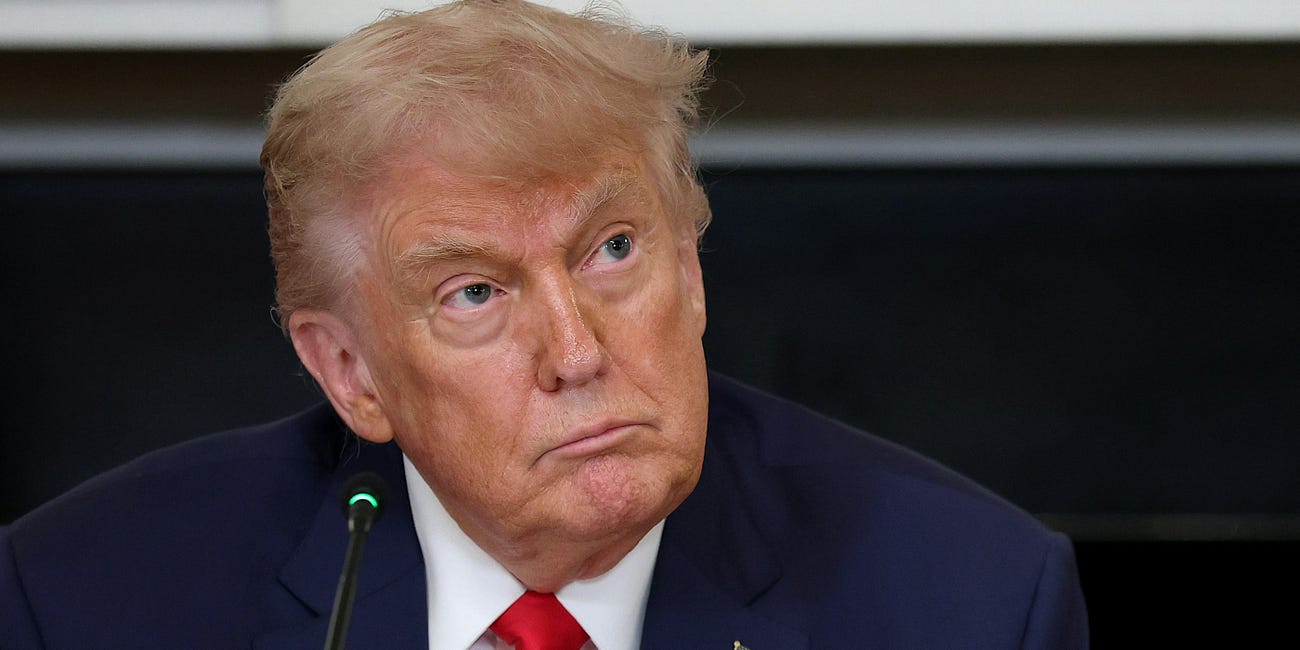America Is at a Terrifying Turning Point—and There’s No Going Back
Why the events of this past weekend should worry everyone who wants a peaceful democracy
Saturday was a surreal day in American politics, in ways simultaneously horrifying and heartening. The horrifying part was the news we all woke up to about the political assassinations (both attempted and consummated) in Minnesota. The heartening was the millions who showed up for the nationwide No Kings marches, which probably made June 14, 2025, the largest single day of political protest in American history. Somewhere in between was Donald Trump’s poorly attended military parade, which turned out to be more troubling in conception than execution, but which nevertheless did not rest comfortably, to put it mildly, within the tradition of the military not being exploited by presidents for political purposes.
Add them all up, though, and throw in the manhandling late last week of a United States senator and the sneering reaction to it on the right, and you can’t help but feel that the country is coming further apart and lurching toward a state of violence—specifically political violence—not seen here since the 1970s.
There’s a difference, though, between the violence of that era and today’s, and it’s an important one to understand. Back then, it felt aberrational and temporary; like America was going through a generational convulsion over some specific issues (civil rights, Vietnam), and that matters would somehow sort themselves out in time. Now? It feels like it’s getting worse by the year, and it’s here to stay—that political violence will just be a feature of American life, sort of like, oh, Libya.
I did not choose Libya entirely at random. ACLED, which stands for Armed Conflict Location and Event Data, is an international group that “collects information on the dates, actors, locations, fatalities, and types of all reported political violence and protest events around the world.” Sunday, I had a look at the ACLED Conflict Index issued in July 2023. As you can see from this map, it places the world’s nations in four categories of political violence: extreme, high, turbulent, and low/inactive.
Ten countries occupy the “extreme” category. Twenty are in the “high” group, and another 20 are marked as “turbulent.” These 50 countries, ACLED says, account for 97 percent of all political violence in the world.
The United States is 50th—right behind Libya at 49. Now, for some context, I should note that some countries that rank well below the United States are hardly paradises on Earth. China, for example, ranks 69th—not, presumably, because everyone is tickled to live there, but because even theoretical attempts at violence against the state are suppressed by the regime in so many ways, like the infamous requirement that Uyghurs register with the local authorities the existence in their homes of kitchen knives.
Still—50 ain’t where we wanna be, folks.
If this isn’t persuasive to you, then let’s look at the matter from the other direction—that is, from the degree of peacefulness that exists in a given country. A group called Vision of Humanity produces a yearly report called the Global Peace Index, which, according to their website, takes into account “23 quantitative and qualitative indicators” and gives the nations of the world a score from one to five, lower being more peaceful.
The top ones on the 2024 index are roughly what you’d expect. Iceland at 1.112, Austria at 1.313, New Zealand at 1.323, and so on (Singapore is up there, indicating, again, that nation-states have different ways of maintaining the peace).
The United States? We rank 132nd, just behind Brazil and ahead of Iran and Lebanon. We did fare better on the group’s 2022 Positive Peace Index, which measures societal resilience; we tied with Spain for 26th. That’s not embarrassing, although one could easily argue that, for the country that is by far the world’s richest nation, which should have many billions to invest in such resiliency in the form of various social supports, 26 isn’t so hot.
All of these reports, as you may have noticed, are from before Trump’s return to the White House. It’s pretty hard to imagine next year’s numbers will show an improvement.
Is there violence on “both sides”? Sure there is. Some of the recent violence against Jews, like the Molotov cocktail attack in Boulder and the shooting of that Israeli couple in Washington, D.C., was perpetrated by people who were acting on behalf of a cause associated with the left. These attacks were repulsive on every level, and we need to call them what they were.
But I had to laugh darkly Saturday evening as I saw many conservatives on social media, prominent and not, try to locate an aha! moment in the fact that Vance Boelter, the Minnesota suspect, was appointed to a state advisory board by two Democratic governors. Please. He was targeting abortion providers. His neighbor said he was a Trump voter.
As for violence at the No Kings marches—there was a little. But the most notable instance was the man driving his car into a group of anti-Trump protesters in Culpeper, Virginia. Gee, I seem to remember another man in Virginia who drove his car into a phalanx of protesters, killing one of them. Which side was he on again?
“The left,” very broadly defined, engages in some acts of violence. Sure. But America’s culture of violence is driven by the right. And here’s the important point. This broadly defined “left” includes people and groups that despise the Democratic Party as much as or even more than they do Republicans. Antifa activists weren’t racing to the polls to vote for Kamala Harris, I assure you. Whereas on the right, the extremists worship Trump. He is their avenger. No Democratic presidential candidate would welcome the support of violent extremist groups (not that they would even offer it). Trump has. Repeatedly. They were at the U.S. Capitol for him on January 6, 2021, ready to administer a little street justice to his vice president in his name and in order to keep him in office illegally.
And that is why this political violence is different from the Weathermen-Patty Hearst iteration back in the ’70s. Today, one of our two political parties abets it. That isn’t going to change, and it’s almost certain to get worse. That will lead to more acts of violence on the other side, and eventually … Libya, here we come.
Trump Accidentally Reveals a Dark MAGA Truth—and Hands Dems an Opening
This week, President Donald Trump admitted on Truth Social that his mass deportations are hurting farmers and the economy. Those removals are “taking very good, longtime workers away” from farms and hotels, Trump declared, adding that those workers are proving “impossible to replace.” To be clear, Trump was talking about









I am a senior citizen who has spent the last 10 years, or 14% of my life expectancy, ranting against Trump's lies, deceipt, greed, racism, sexism and reprehensible behavior. I have come to the conclusion that it has been a complete waste of time. Idiocy has taken over the country. Those with the power to oppose have instead acquiesced and surrendered without a fight. Since I don't believe in any kind of religious nonsense the only answer is nihilism. Let it burn.
Tomasky!
Thanks for sharing your analysis and thoughts on the violence brewing in our society!
You are absolutely correct!
Today’s political violence is noteworthy and raises disturbing questions!
IMHO the question is whether America will remain a true democracy, a “ government of the people, by the people and for the people!”
The political violence today is noteworthy as it’s not about Left vs Right, as defined by traditional policy differences!
The political violence today is a fight to keep a government based on the U.S. CONSTITUTION!
We are, and always have been, a more violent culture than our European cousins!
Guns moved westward on every covered wagon! Guns are idolized in our movies and television series! Guns invade every community and ride in many a vehicle!
Yet, today Americans fight for their future!
Will we be governed by a Constitutional Democracy or will we be ruled by a Tyranny of Wealth?